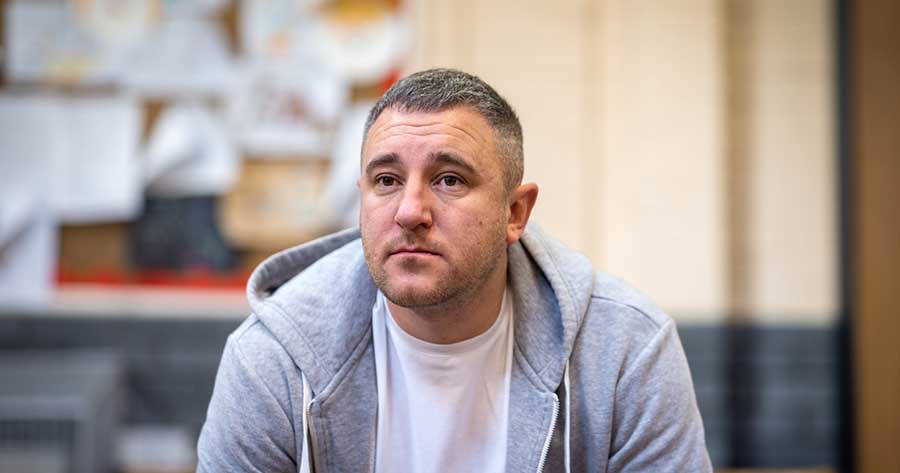Comorbid diabetes and mental disorders are common; up to one third of people with diabetes experience moderate to severe levels of depression, anxiety or both (Anderson et al, 2001; Grigsby et al, 2002). In addition to being associated with inadequate use of preventative services and increased healthcare costs, this can be damaging for the individual and society (Hutter et al, 2010). Research demonstrates that many healthcare professionals lack confidence in their ability to identify psychological problems in people with diabetes or to intervene effectively (Peyrot et al, 2005). This article will describe the mental health issues that diabetes nurses are most likely to encounter, outline the psychological interventions available and provide an overview of the techniques that nurses can use to help.
The relationship between mental health issues and diabetes control
Mental health issues are common in diabetes, and their relationship with one another is complex, bidirectional and not fully understood (see Figure 1). Theories explaining the increased prevalence of mental health issues in diabetes populations and their relationship with poor glycaemic control consider biological pathways, as well as psychological and social factors. Mood disorders can predict the onset of diabetes (Nouwen et al, 2010) and this is only partially explained by lifestyle factors (Atlantis et al, 2012), suggesting a shared biological pathway for diabetes (high blood glucose) and mood disorders. Diabetes may also act as a trigger for mental health problems in vulnerable individuals and mental health issues can interfere with optimal diabetes self-management, leading to poor glycaemic control.
Fewer studies have looked at social factors, but they are important nonetheless. Financial worries, employment status, living conditions, social support and access to community services can affect an individual’s ability to manage their diabetes effectively (Delamater et al, 2001). Similarly, diabetes complications can have a negative effect on a person’s social situation. For example, losing one’s driving licence, due to frequent hypoglycaemic episodes, may lead to unemployment, social isolation and a lack of autonomy; all of which are associated with mental health issues (Bruce, 2002; de Graaf et al, 2002). The complex relationship of diabetes, mental health and social factors highlights the need to treat people holistically and to promote interdisciplinary collaboration.
Summary of common mental health problems
Adjustment disorders
When a person’s level of distress as a result of a psychosocial stressor is in excess of that expected and is affecting the person’s ability to cope or function, they may be diagnosed with an adjustment disorder. This may manifest itself in a deterioration of self-management, behavioural disturbances and symptoms of depression and/or anxiety. Adjustment disorders are short-term (usually lasting no longer than 6 months), with an onset of symptoms within 1 month of the stressor. High levels of diabetes-related distress after diagnosis can trigger the onset of an adjustment disorder; in a recent case-note survey, 28.5% of those referred to a liaison psychiatry diabetes clinic received this diagnosis (Dalvi et al, 2008). Predictors of diabetes-related distress include: diabetes complications; setbacks in diabetes management; negative life events; chronic stress in daily life and previous history of depression.
Depression
The International Classification of Diseases 10th edition (ICD-10) identifies depression as having three main symptoms: depressed mood, increased fatigue and loss of interest or pleasure in activities (anhedonia). Additional symptoms include: loss of confidence; feelings of failure or excessive guilt; suicidal thought or acts; poor concentration/indecisiveness; slowing or agitation of movements; sleep disturbance and change in appetite. The presence of four symptoms (two of which need to be main symptoms) for a 2-week period indicates mild depression; six indicate moderate depression and eight or more suggest major depression.
Between 5–10% of the general population experience depression (Peyrot and Rubin, 1997) and it is 2–3 times more prevalent in people with diabetes, with the risk being bi-directional and not fully understood (Roy and Lloyd, 2012). Depression can have a severe negative impact on quality of life and, for a person with diabetes, the consequences can be even more detrimental. Deterioration of self-care may include not taking medications, missing appointments, eating erratically and using insulin to self-harm. Depression is positively associated with poor glycaemic control and diabetes complications (de Groot et al, 2001) as well as an increased risk of mortality (Winkley et al, 2012).
Anxiety disorders
Anxiety is the prominent symptom in a range of disorders such as generalised anxiety disorder (GAD), panic disorder, phobias, obsessive compulsive disorder, and post-traumatic stress disorder. Around 14% of people with diabetes have diagnosable GAD and up to 40% have subsyndromal elevated anxiety levels (Grigsby et al, 2002).
The effect of anxiety on a person’s diabetes management can vary. For example, specific fears about diabetes complications may lead to some people running their blood glucose at low levels, risking episodes of hypoglycaemia (Rogers et al, 2012); the opposite can occur if people have specific fears of hypoglycaemia (Wild et al, 2007); and some people may simply avoid testing altogether.
Specific phobias, especially of needles and injections, can create obvious problems for people with diabetes. Although “true needle phobia” is rare, if a person is reluctant to start insulin or other injection medication, the possibility of a phobia should be explored. Psychological insulin resistance is also common, but the anxiety associated with this is not necessarily at the level of a phobia (Polonsky et al, 2005). When any anxiety disorder is prominent in a person, the preoccupation with the anxiety and avoidance of situations/objects that may trigger it, can lead to neglect of diabetes self-management.
Psychological interventions/techniques
Research shows that psychological interventions can be used to treat mental health problems in people with diabetes. Research has focussed mainly on depression and suggests psychotherapy has a greater effect on depressive symptoms and glycaemic control than antidepressant treatment, especially when combined with self-management education (van der Feltz-Cornelis and Nuyen, 2010). Psychotherapy, counselling and psychological interventions are umbrella terms and people referred for psychological therapy may receive different types of verbal therapies.
Supportive therapy focusses on increasing the individual’s self-esteem and adaptive skills and identifies unhelpful behaviours by exploring the person’s interpersonal patterns (Woller et al, 1996). Motivational interviewing (MI) involves helping the individual identify and resolve discrepancies between their goals, values and current behaviour (Williams et al, 1998). Psychodynamic (or psychoanalytic) therapy focusses more on understanding current behaviour through past experiences (Pusch et al, 2012). Behavioural therapy uses techniques such as goal-setting and reinforcement (Pusch et al, 2012) and interpersonal therapy focusses on coping strategies and interpersonal relationships (Wilfley, 2001).
The most commonly used psychological therapy in the treatment of adjustment disorders, depression and anxiety is cognitive behavioural therapy (CBT), although not one specific psychotherapy is recommended for adjustment disorders. CBT examines the relationship between a person’s thoughts, feelings and behaviours, and focusses on practical solutions to current problems. The cognitive element involves identifying and modifying dysfunctional cognitions, or thoughts, into more realistic and helpful ones; this is called “cognitive restructuring”. The behavioural element refers to the use of behaviour change strategies such as cueing, goal-setting and positive reinforcement, as well as activity scheduling and stress management techniques. CBT has been shown to be effective at treating depression and anxiety in people with diabetes, as well as improving self-care behaviours and having long-term effects of lowering HbA1c (Snoek et al, 2008).
The role of the nurse
Identification
Diabetes nurses may be the first point of contact for individuals with diabetes and mental health problems. Being aware of, and sensitive to the symptoms of mental health disorders can make identification easier. Frequent non-attendance at appointments, lack of adherence to medications and persistently poor diabetes control may be the first signs that someone is struggling. With people that show these signs, it is important not to give up as they are likely to need the most input.
Until recently, the Quality and Outcomes Framework (QOF) encouraged healthcare professionals to ask people with diabetes about depression. Although no longer a part of QOF, it is still prudent to ask these questions. If depression is suspected, a validated questionnaire such as the Patient Health Questionnaire-9 (Kroenke et al, 2001) or the Hospital Anxiety and Depression Scale (HADS; Zigmond and Snaith, 1982) is recommended to detect the presence of depression. The HADS can also be used to screen for anxiety, but a validated screening tool for detection of adjustment disorders is not available and clinical judgement is needed.
Paying particular attention to vulnerable groups, such as females, those with complications, those who are new to insulin and those who have a history of mental illness, is important. If you suspect a person has a mental health problem there are various steps you can take in order to help them.
Education
Diabetes education is an important tool in improving the individual’s sense of empowerment, understanding and self-management skills. Although not designed to target depressive symptoms, research has shown that diabetes education can result in a reduction of depression and anxiety, as well as having long-term positive effects on well-being (Tankova et al, 2004; Davies et al, 2008). Structured education should be offered to all people with diabetes (NICE, 2003) and may be particularly helpful for those newly diagnosed. Unfortunately, many individuals with diabetes are not given this opportunity, and research shows that only a minority attend diabetes education (Harris et al, 2007). As well as facilitating education attendance, the nurse is also in a position to address any concerns the person may have about diabetes and/or medications.
Self-help and peer support
There are self-help materials available on the internet, which give information and practical advice to people with mental health issues, for example, www.mind.org.uk/help (accessed 27.08.13). Studies have demonstrated that peer support provided by a trained peer to others with diabetes can improve quality of life, as well as metabolic control (Fisher et al, 2012). Diabetes UK and NHS websites provide information on local peer support and it is vital for diabetes nurses to be aware of services available in their local area.
Referral to mental health services
People with diabetes will need referral to mental health services to be diagnosed with a mental health problem and to receive treatment. The NHS Improving Access to Psychological Therapy (IAPT) programme has been rolled out across the UK with the aim of making psychological intervention for mental health problems freely available on the NHS to everyone who needs it. However, services are still lacking in some areas. People can be referred via their GP, or refer themselves. Some hospitals may provide a liaison psychiatry service, where people with diabetes are offered specialist psychological interventions by diabetes mental health professionals. Other community-based services may be available for certain groups of people, for example for Black, Asian, or minority ethnic people, or older individuals. Asking for help may be difficult for some people and nurses may be best placed to coordinate the care, perhaps arranging appointments and keeping all healthcare professionals informed.
Techniques to use in practice
Some of the techniques used in psychological therapies can be adopted by nurses to elicit positive behaviour change in people with diabetes. Use of MI, behavioural activation, problem solving and promoting self-help material from nurses has been shown to reduce depression in people with diabetes (Lin et al, 2012). The MI technique has also been shown to improve glucose control in adults with diabetes (Williams et al, 1998). Behavioural activation simply means encouraging activity, as quality of life in adults with diabetes has been shown to be positively affected by increased physical activity and adequate social support (Bourdel-Marchasson et al, 2013; Myers et al, 2013).
Goal-setting and positive reinforcement are common behaviour-change strategies. Achievable goals should be set together with the individual. When a goal is achieved, or when the person makes a marked effort to do so, praise and encouragement will act as positive reinforcement. It is important, however, that this praise and encouragement should be sincere and not delivered in a patronising manner.
Involving family members in treatment discussions can also be beneficial, especially for children and adolescents (Delamater et al, 2001). It is important to focus on the maintenance of an individual’s positive behaviour and mental health, not just the initiation of behaviours or treatment. Specialist psychological training is not always necessary and ongoing support from nurses is extremely important; telephone follow-up can have a positive influence on HbA1c values and self-care (Kim and Oh, 2003).
Case studies
The following case studies illustrate the circumstances that can lead to feelings of anxiety and depression in people with diabetes and the response of the diabetes nurse.
- Miss A is a 21-year-old female. She had just finished university and started a graduate job when she was diagnosed with type 1 diabetes. She has had multiple admissions to hospital with diabetes ketoacidosis (DKA), leading to periods of time away from work, who are unsupportive. Her mood is low, she feels unable to cope, reports self-harming behaviours and has had to move back to her parent’s house for support. She was referred to a dose adjustment for normal eating (DAFNE) course, and is receiving CBT to help with adjustment through IAPT.
- Mr B is a 56-year-old male with type 2 diabetes. He has worked on building sites his whole life driving a digger. He recently had his driving licence revoked and has been unemployed for 4 months. Rejections from job applications and financial difficulties have left him with feelings of failure. His mood has rapidly deteriorated and he reports he has “given up”. Mr B was referred to a local social support agency who offered him support in CV writing, a free IT course to increase employability and financial advice.
- Ms C is a female in her early 30s with type 2 diabetes. She has stopped attending her appointments, but when she does attend her HbA1c value has risen. She reports lacking the energy to leave the house and only takes her insulin occasionally because she “forgets” or “can’t be bothered”. She has stopped seeing friends and family and says there is nothing she enjoys doing anymore. Her nurse referred her to the liaison psychiatry service where she was prescribed antidepressants and CBT. She was also advised to attend a local befriending service with the aim of increasing socialisation.
- Mr D is a male in his late 30s who recently started on insulin. He experienced an episode of hypoglycaemia when alone in his flat, in which he fell and received a head injury causing a coma. Since being discharged from hospital, he is anxious when alone, tests his blood glucose frequently, avoids his quick-acting insulin and allows his blood glucose to stay high in fear of hypoglycaemia. His nurse liaised with his GP to organise referral to IAPT and arranged week-long intensive support involving supervision whilst taking his quick-acting insulin in the clinic, to increase his confidence and promote routine.
Conclusion
Mental health problems are common in people with diabetes and are associated with poor outcomes. The relationship between diabetes control, mental health and social factors means a holistic approach is needed. Psychological interventions can be used to treat common mental health problems in diabetes. Identifying people with mental health issues, accessing available resources and referring to relevant services are important roles for diabetes nurses.




In her final editorial, Su Down reflects on her career and the remarkable progress in diabetes care she has seen.
11 Dec 2025